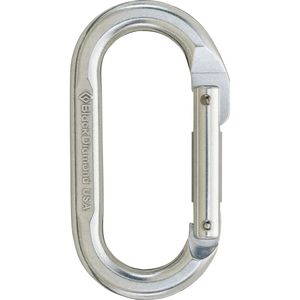tophopper
The resident asshole
Very well done Paul!
Paul, have you thought of using a 300 series SST to keep from corroding and not needing to coat it?
304 or 316 sheet form nice in bend dies.
Pretty sweet, I'd buy one, but I wouldn't pay a lot. no offense. I'm sure a lot of time and money went into making it, but once it's in production it's really just a stamped out piece of metal you add some carabiners too. which is awsome by the way, brilliant and simplistic. you'll be like the paperclip guy, selling millions of something inexspensive.
On dDrt I use 7/16 tenex tied in a 3/2 VT. I would not advise anybody using tenex with the HH simply because I think a higher melting point cordage should be used for safety, I use Bline currently. Not sure if there is any validity to recommending these cordages but erring on the safe side cannot hurt. As to leaving the setup on the rope as you mentioned, I see no problem with that, in fact thats what I do and the HH can be used for dDrt if needed.....
 only 10' would pass through it on Srt, and if the descents were at equal velocity, the Drt would move twice as fast at the hitch, thereby creating more heat/friction, at least in my thinking.
only 10' would pass through it on Srt, and if the descents were at equal velocity, the Drt would move twice as fast at the hitch, thereby creating more heat/friction, at least in my thinking. 
 I am better about accepting the risks than I was when I started putting the Wraptor out but it is a very scary thought that you are responsible for ANY eventuality that may occur from the use of your product. IMO the higher the melting point of the hitch the less likely that the hitch cord can fail. As you stated in my configuration the hitch sees no more load than dDrt but what if a stick jams a biner or a small meteorite strikes it etc etc. It is hard to foresee ANY eventuality, bottom line is if your hitch holds you are fine so use a better hitch cord.....
I am better about accepting the risks than I was when I started putting the Wraptor out but it is a very scary thought that you are responsible for ANY eventuality that may occur from the use of your product. IMO the higher the melting point of the hitch the less likely that the hitch cord can fail. As you stated in my configuration the hitch sees no more load than dDrt but what if a stick jams a biner or a small meteorite strikes it etc etc. It is hard to foresee ANY eventuality, bottom line is if your hitch holds you are fine so use a better hitch cord.....What is the reasoning behind this, Paul? I mean, for any length of descent, the hitch would run over more rope on DRT than on SRT, would it not? Not arguing your reasoning, mind you, just asking. In other words, if one were to rapidly descend 10' on Drt, 20' of rope would pass through the hitch, whilstonly 10' would pass through it on Srt, and if the descents were at equal velocity, the Drt would move twice as fast at the hitch, thereby creating more heat/friction, at least in my thinking.

What is the reasoning behind this, Paul? ...the Drt would move twice as fast at the hitch, thereby creating more heat/friction, at least in my thinking.
In Double rope Scott, the hitch is only bearing half the load. That equals less heat, than the same hitch on Single rope which has more pressure, and more friction.
There is some very good information in this paper regarding hitch response in both DdRT and SRT configurations plus they did both pull tests and drop tests. Bottom line is there is a very good chance for the hitch to become welded to the line in an SRT fall so the danger in using a low melting point hitch cord is it requires less force to become friction-welded than one with a higher melting point.
The Hitch Hikers load sharing factor would need to be tested to determine how much it would alter these findings but it makes sense to recommend a high melting point hitch for any SRT work.
Dave
http://www.paci.com.au/downloads_public/knots/14_Report_hitches_PBavaresco.pdf

 .
. Oh er sounds rude!
Oh er sounds rude!Yes steel biners, in fact the device is very finicky about its binersto the point where I think we will provide biners with it. Price to be decided. What do you guys think a good price would be considering we will provide 2 $25 steel biners and a heat treated tool steel Hitch Hiker....


We even made them out of 410 stainless but the problem is the contact between the steel biner which is constantly moving and when locked under high load = wear .
I'd say around $75. Definitely not more than $100. You're selling a single piece of machined metal with no moving parts. I think of micropullies selling for $18, and those carabiners with laser etched logos and all that sell for a similar price- of course they are all made and a much larger scale.
